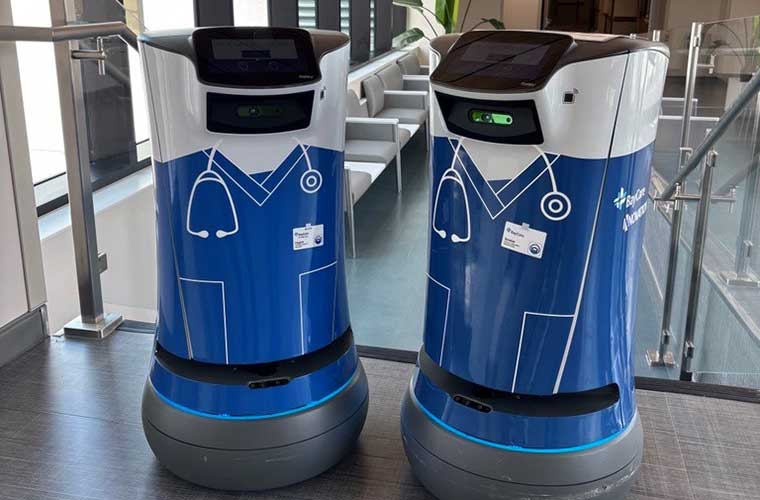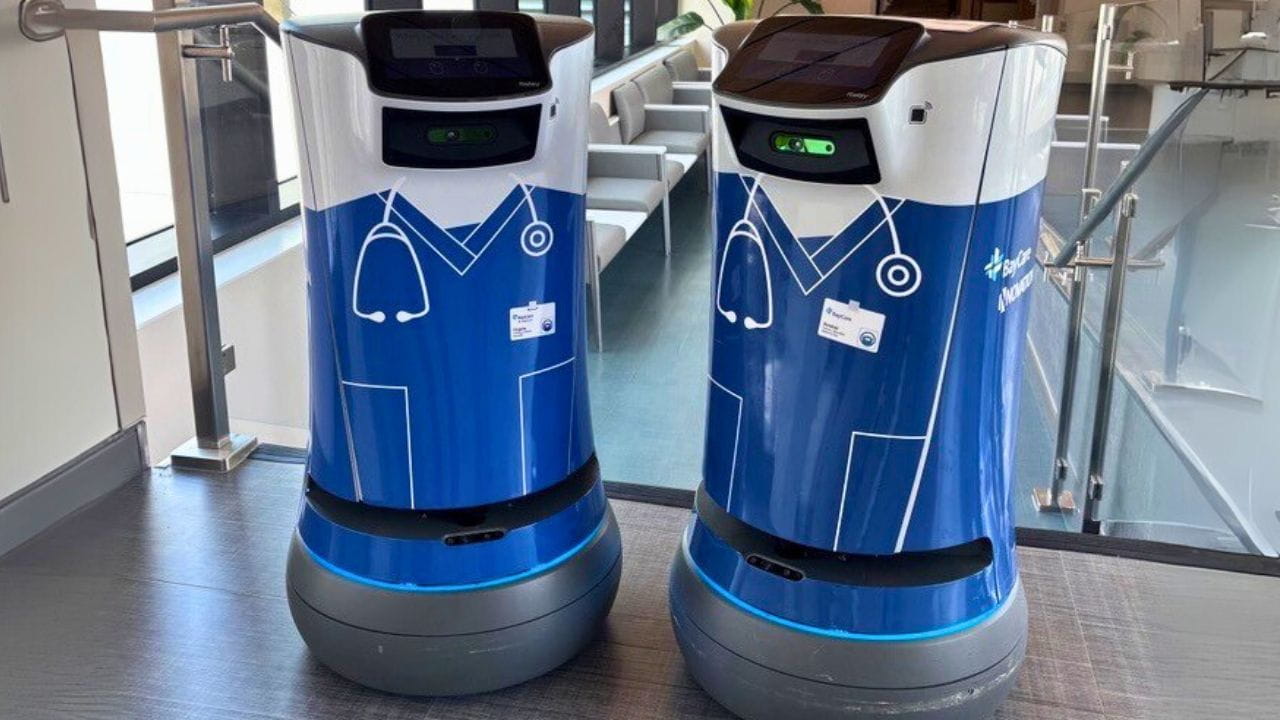Meet Beaker: The Robot Helping BayCare Deliver Innovative Health Care
BayCare has distinguished itself as a leader in health care innovation by integrating advanced technology across clinical and operational settings, including the use of robots. In the iconic movie of many generations, Star Wars and its sequels, R2-D2 was a huge help to Luke Skywalker – navigating flights, warning about nearby Stormtroopers or finding the hyperdrive on the Millennium Falcon. Now, BayCare’s St. Anthony’s Hospital has its own R2 unit – sort of.
Carefully navigating the halls of the hospital since last October, an autonomous mobile robot, affectionally named Beaker, helps the heroes of St. Anthony’s Hospital. Not in a galaxy far, far away, but much closer in nearby St. Petersburg, Beaker cruises between the first-floor laboratory and the higher floors of the intensive care unit (ICU), cardiovascular ICU and dialysis, calling elevators and making pickups and deliveries.
He is the latest digital innovation at BayCare aimed at working alongside team members to continue to provide extraordinary care for patients.
How Beaker came to St. Anthony’s Hospital isn’t the stuff of science fiction. Craig Anderson, BayCare’s vice president of innovation, first saw a similar robot at a hotel in Miami. “I saw how it worked really well in a hectic hotel environment, and I figured we’re no different,” he said. “If it works there, it can work for us.”
Anderson contacted the company that made the hotel robot, Relay Robotics, which already worked in the health care industry but wanted to expand its reach. Thus, a pilot was born. St. Anthony’s Hospital, one of BayCare’s 16 hospitals across West Central Florida. The hospital was chosen for the pilot because some older areas of the nearly 94-year-old facility are without pneumatic tube systems that move things through the hospital floors. Instead, staff members act as runners, sometimes making between 40 to 60 trips to the laboratory each day.
“We found an opportunity to help the nursing staff by using this robot to take care of a lot of the trips they run from some of the critical care units to the laboratory,” Anderson said. “In the world of nursing, if we can save minutes, we can save hours. We wanted to give that time back to our nurses to spend with their patients. These trips have now shifted to Beaker.”
Here’s how it works: Beaker is programmed to navigate through the halls and to open secure doors to the intended units. He can call team member-only elevators and ride down to open the secure lab door and maneuver to the lab processing station. He then waits for someone to remove the specimen. Only authorized team members with badge access can gain entry into Beaker’s built-in, specimen-holding cargo space.
“We know what time Beaker’s cargo bay was opened and closed and what time the delivery started and stopped,” Anderson said. “We have all the metrics and have a full chain of custody from our care team to the lab and vice versa.”

Nicole Fisher, St. Anthony’s Hospital lab manager, said the team loves working with Beaker. “Nursing loves the less time off the unit and fewer steps during the day to run labs down. We love it for the same reason,” Fisher said. “It also has improved our turn- around times for getting results back to the units.”
The lab team selected Beaker’s name and they played a hand in designing their robot companion's scrubs by adding a lab coat and a stethoscope.
Beaker recently became a full-time employee when a St. Anthony’s Hospital Foundation donor generously donated $119,000 for his purchase. And now a second robot, Hygeia (pronounced hih-JEE-uh), named for the Greek goddess of health, has started a pilot to serve pharmaceutical needs.
“We look to put technology in place where it helps our team members, where it can help our guests and where it can find a better operational cost so that we can do everything we want to do and do it better, faster, even cheaper in many cases,” Anderson said. “This is a great example of how technology and people work well together when you put the right solution in front of the right challenge.”
“BayCare has put our thoughts and concerns right at the forefront and have offered this amazing solution,” said Corey Cook, ICU assistant nurse manager. “Being able to have this solution take care of our needs and we're able to give back directly to our patients, that's meant the world.”
The use of advanced technology like Beaker has landed BayCare on Becker’s Hospital Review’s list of Health Systems with Great Innovation Programs. BayCare has shown its commitment to innovation by participating in a pilot program to use AI-assisted voice technology for nurses; by being the first health care facility to use Amazon’s Just Walk Out checkout-free technology at the St. Joseph’s Hospital cafeteria; and by transforming the BayCare Integrated Service Center (BISC), the health system’s warehouse, with the use of robots.
Whether more Beakers come to BayCare is up to each hospital leadership team, Anderson said. “I think it’s absolutely proven itself for the lab and we’re well on our way with the pharmacy,” he said. “I think it is viable for anywhere that we need to move things from point A to point B safely and securely and very cost effectively within a hospital.”

